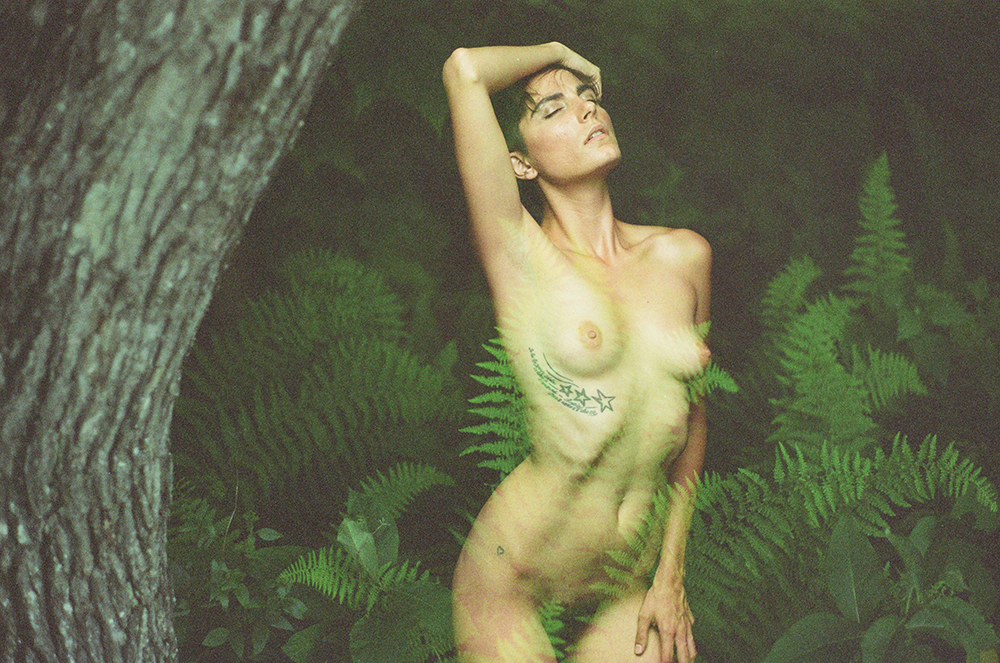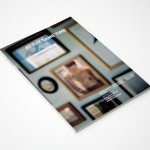Bunny Luna: We Need Each Other
While my medium is primarily photography, it is also energy, light, movement, touch, emotion, connection, and love. My intention is to elevate and support my community through honoring the sacred uniqueness of life and facilitating experiences of creative healing, love, and openhearted connection with people of diverse backgrounds. The ethereal images we create together are timeless reminders of the sacred and undeniable interconnectedness of human and nature.
North Carolina based agender, queer multidisciplinary artist Bunny Luna (they/them) has been exploring the sacredness and interconnectedness of all living beings since 2010. After receiving two associate’s degrees in art & fine art, they continued their life-long education through full-time artistic self employment. Bunny’s nude self portraits and 35mm film double exposures in nature have been shown in galleries across the country and internationally published. Using skills from their training and experience in yoga, meditation, Reiki, and facilitating creative healing workshops and events, Bunny creates a container of acceptance and safety in which co-creators are able to process their feelings and transmute them into vulnerable images of interconnection with self and nature. Nudity is a fundamental part of their work because without clothing, we are able to separate from societal expectations and truly be our raw authentic selves. Bunny finds inspiration in the differences that connect us, quiet understandings between human and nature, light coming through fresh spring leaves, water endlessly flowing over mossy rocks, and the stoic groundedness of trees.
Kat Davis: How did your relationship with photography and image making begin?
Bunny Luna: My relationship to photography and image making began when I was around 2 years old. I was home with my parents and younger sister and while my dad was taking a family photo I was adamant that I “want to smile!” At 2 years old I thought that was what taking a photo was called, because when someone pointed a camera at me they said “smile!” and it took my parents a bit to realize that I wanted to TAKE the photo, not just be in it. As a kid I would take photos with my parents’ cameras and at 16 they got me my own DSLR. I would go to parks and take photos with my friends, roam around my neighborhood taking photos of flowers and plants, and it wasn’t long before I started taking self portraits. A couple years later I bought myself my first film camera, a Holga, and accidentally took a double exposure with it. Not long after that I purchased a Pentax K1000 and that was truly the beginning of my obsession with film and double exposures.
KD: I love that photography and the idea of making images for yourself – and of yourself! seemed to come naturally to you. I bet that Holga “happy accident” was a light bulb moment. I still remember seeing an image develop in the darkroom for the first time and having that sense of magic… Do you consider the materiality of photos? Do you have any opinions on the tactile process of developing film versus making digital images?
BL: I definitely think about and appreciate the materiality of film vs digital image-making. The images I create with film (which is probably over 90% of my work) feel much more real, tangible, and therefore sacred to me. When I am able to physically hold film negatives in my hands, I’m reminded that it’s a physical token of a single moment in time that was important enough that I chose to capture it forever.
BL: Something exists and is valuable simply because it exists, and for me the process of taking an image reinforces the significance of whatever it is I’m photographing. With only 36 images on a roll of 35mm film, I am very mindful of when I choose to press the shutter button. Each image is just as important as the others, just as each living being is just as important as all the rest of them.
KD: Your work relates deeply to ideas about the environment and our connections to each other and to nature. Whether it’s self portraits or portraits of others, your imagery feels very carefree and dreamlike. I get the sense that this ease comes in part from your ecosexuality. Can you talk about that aspect of your identity, and how it informs your artistic practice?
BL: Ecosexuality, which is seeing the Earth as a lover and/or partner instead of as a resource to exploit, has been a major part of my life for as long as I can remember. I didn’t have a word for it until about 2017-2018 when my friend recommended that I read an essay by Charles Eisenstein called “The Ecosexual Awakening”. His essay put into words what I had always known in my heart. The more I research, learn, and grow, the more deeply I understand that everything is interconnected, and what I do to heal myself inevitably ripples out into the world.
BL: My ecosexuality greatly informs my artistic practice, not only in the subjects I photograph and where I photograph them, but also in the way I move about the world and what I choose to spend my time, money, and energy on. I have always preferred to create outdoors with natural light, I have always enjoyed connecting with others while in a forest or next to a river, I have always felt most myself when nude in the wilderness. The images that I gravitate toward creating the most (and have historically been my favorite images) have been photographs of people double exposed with nature. These images turn my dreams into reality: becoming one with nature. Through double exposures I am able to turn people’s skin into flowers and moss, to turn a waterfall into tears falling from a person’s face, to give someone a crown of butterflies, to allow myself to become a vast desert landscape.
KD: Creating double exposures invites in the element of chance – you won’t know what the final image will look like until it’s processed. How does that influence your process? What does luck, or perhaps serendipity, mean for you?
BL: I cannot (and will not) control the way my double exposures turn out. I never truly know what they’re going to look like until the film is developed. As someone with a tendency to obsess over perfection, the serendipitous magic of double exposures reminds me that the Universe is co-creating with me at all times. It is freeing to let go of control and expectations, and I am always amazed at how magnificently the images come together.
KD: I definitely get the sense that these images are from a dream, or a more magical and interconnected reality. So many of the constructed ideas that are foisted on us can fall away, and we’re just left with a figure in nature, and the freedom of these forms. Do your subjects share in your ideas about the Earth as a partner in life? How do you seek out and connect with the individuals in your photos? (I know for me personally, I started photographing people I’m close with, and friends of friends… until the circle expanded.)
BL: When I first started taking photos of others, I was only taking photos of my friends and family. As I shared those images and stumbled into the art nude community online, the circle of people who were willing to be in front of my camera got much larger. Nowadays, most of the people I create with I met online through social media (primarily Instagram), or through friends of friends. I’m more particular about who I create with now than I was in the past. My intention is to create with folks who share at least some of my values and ideals, and that means less photo shoots, but more powerful and meaningful experiences when I actually DO create with someone else. For me, the images that come out of a shoot are the cherry on top of the HUGE sundae that is the experience of creating with a like-minded soul.
KD: Especially as a queer person, creating a new reality where you can just “be” can be cathartic, and an intentional part of making images… I’m curious if your Ecosexuality and identity as a nonbinary person are connected? Do you feel this aspect influences your work, and the way you move through the world?
BL: Intentionally creating images, not for the images themselves, but for the experience of being in my body and creating them, has been incredibly healing for me and has allowed me to understand myself in deeper ways than I ever have before. I’ve learned new ways to describe myself and move about the world and I owe that in large part to my willingness to be curious and present with myself in the creation of self portraits.
BL: At 29 years old, after a 69 day solo cross country road trip living in my van last summer, I was able to give myself the space to grow into labels that I now use to describe myself: agender visual artist, ecosexual witch, and energy healer. I use these labels because they bring me joy, remind me of the person I know I am and the person that I WANT to be. The labels I’ve chosen for myself are interconnected, and my experience of embodying them greatly influences the art I create. When I look back, even at my earliest work, I realize that I’ve had all of this within me and being expressed through me and my work all along. It just took a while to be able to clearly articulate and find these labels to describe it. The overarching theme of my entire body of work is connection to nature through connection to self / connection to self through connection to nature. None of us exists without all of the rest of us.
We need each other.
Posts on Lenscratch may not be reproduced without the permission of the Lenscratch staff and the photographer.
Recommended
-
Earth Week: Aaron Huey: Wallpaper for the End of the WorldApril 26th, 2024
-
Earth Week: Casey Lance Brown: KudzillaApril 25th, 2024
-
Tara Sellios: Ask Now the BeastsApril 6th, 2024
-
ALEXIS MARTINO: The Collapsing Panorama April 4th, 2024
-
Emilio Rojas: On Gloria Anzaldúa’s Borderlands: The New MestizaMarch 30th, 2024





































































































